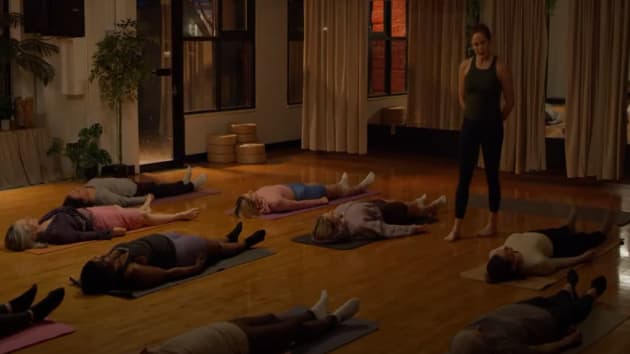When Michelle Terry, the artistic director at Shakespeare’s Globe theater in London, decided to put on a production of “Richard III” with a feminist twist, she probably didn’t expect accusations of discrimination. But that’s what she got. The run-up to the show’s premiere on Tuesday was overshadowed by a controversy over the fact that Terry had cast herself as the villainous title character despite not having a physical disability.
The play depicts a set of murderous machinations whereby Richard, Duke of Gloucester, achieves his ascent to the English throne in 1483, and the events leading to his demise at the hands of Henry, Earl of Richmond, who would become Henry VII, the first Tudor king. Richard, described as “deformed” in the play’s opening lines, has traditionally been portrayed as a hunchback — almost always by able-bodied actors, with only a few notable exceptions in recent years. (In 2022 Arthur Hughes, who has radial dysplasia, became the first disabled actor to play Richard for the Royal Shakespeare Company.)
When Shakespeare’s Globe announced its casting earlier this year, the Disabled Artists Alliance, a British organization, published an open letter condemning it as “offensive and distasteful,” since Richard’s “disabled identity is imbued and integral to all corners of the script.”
Shakespeare’s play, the statement added, “cannot be successfully performed with a non-physically-disabled actor at the helm.” The Globe issued a robust response pointing out that Richard would not be played as disabled in this production, and adding that, in any case, “the Shakespearean canon is based on a foundation of anti-literalism and therefore all artists should have the right to play all parts.”
Until relatively recently, it was uncontroversial to have a nondisabled actor play a disabled role. Dustin Hoffman’s portrayal of an autistic character in “Rain Man” and Daniel Day-Lewis’s protagonist with cerebral palsy in “My Left Foot” both won best actor prizes at the Academy Awards in the late 1980s. These days, the practice is increasingly contentious: Jake Gyllenhaal received blowback when he played an amputee in “Stronger” (2017), as did Dwayne Johnson in the action movie “Skyscraper” (2018); Bryan Cranston was similarly criticized for playing a quadriplegic in “The Upside” (2019).
In the case of “Richard III,” the debate is more complicated, because Shakespeare’s portrayal of disability never aspired to anything as noble as depicting lived experience. His script, written in the early 1590s, drew heavily from chronicles by Tudor historians who sought to depict the usurper Richard in the most unflattering light. They included Edward Hall, who described Richard as “evil-featured of limbs, crookbacked, the left shoulder much higher than the right,” and Thomas More, whose “History of King Richard III” framed Richard’s physique as a corporeal manifestation of his rotten character: Shakespeare took this theme and ran with it.
Scholars long speculated that these accounts were exaggerated — suspicions confirmed in 2012 when Richard III’s bones were found underneath a parking lot, and we learned that, though he did suffer from scoliosis, a curvature of the spine, he seems to have been only mildly disfigured. There is, therefore, a curious argument here: When disability activists object to any reimagining of “Richard III” that reduces or effaces the disability aspect, they are effectively arguing to preserve a caricature.
And what if the true source of the play’s interest lies elsewhere: in its rendering of Machiavellian intrigue and political hubris? This was the angle taken by the Globe production, which is directed by Elle While and runs through Aug. 3.
Here, Terry makes the role into a histrionic grotesque of crotch-thrusting egotism, playing Richard’s cynical manipulations for laughs as she switches abruptly between insincerity and megalomaniac candor. She is an arresting sight in a ruffled blouse, leather jacket and biker jeans, sporting with an unkempt peroxide coif that brought to mind the serial sex abuser Jimmy Savile. Later, she swaps out the blouse for a chiseled silicone torso, but there isn’t a hump — real or otherwise — in sight.
One by one, Richard offs every character who stands between him and the throne; his victims are unceremoniously rolled into a trapdoor, and later revisit him as reproachful ghosts. The murder spree is punctuated by scenes of political grandstanding in which he interacts with a number of actors in raincoats embedded among the audience, representing a rabble of citizens. The action is soundtracked by the foreboding rhythms of an impressive band whose saxophonist bears a startling resemblance to the Bard himself.
Here and there, new lines have been inserted into Shakespeare’s text to drive home its contemporary relevance in a in a world dominated by macho strongmen. There were knowing laughs when Richard made a couple pronouncements lifted straight from Donald Trump. The theme is emphasized, ironically, by an almost entirely female cast.
The decision to present the play as a parable of resurgent chauvinism, rather than a psychological portrait of one man’s vengeful malice, is not without precedent. A 1920 production in Berlin by the Jewish director Leopold Jessner presented “Richard III” as a defense of Weimar republicanism at a time when German democracy was under threat; in Jürgen Fehling’s 1937 production, Richard appeared as a clubfooted minister of propaganda evoking Joseph Goebbels; and Donald Wolfit’s and Laurence Olivier’s interpretations, in 1939 and 1944, overtly likened Richard to Hitler.
The show’s message about the perniciousness of misogyny is well communicated, but as a spectacle, it’s a mixed bag. Though Terry’s strutting bravado is compellingly dynamic, and Helen Schlesinger gives a measured and poised performance as a pinstripe-suited Buckingham, some of the actors in secondary roles — of which there are many — struggle to convincingly render male characters. Vocal delivery — timing, pacing and intonation — proves a challenge: Too often, the players default to a generic shouty bluster that, over the course of three hours, becomes wearing. The fun gradually fizzles out after the intermission and the Globe’s tradition of closing its productions with an upbeat dance routine, as was the case in Shakespeare’s time, only partially distracts from the sense of anticlimax.
Entertained but not wowed, I couldn’t help thinking that the show, and the controversy around it, were indicative of a creative culture in which political gesturing is obscuring important concerns. Perhaps we should to pay less attention to casting, and more attention to craft.







